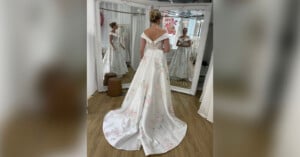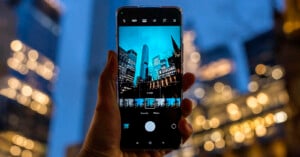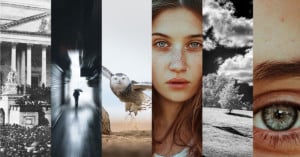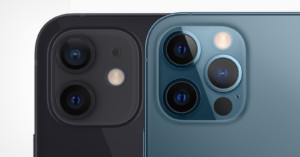
Google’s Top Secret Camera Lab Has a Fake Cafe for Testing the Pixel 8 Pro
Google has an elaborate photo set so it can test its Google Pixel camera in situations akin to the real world.

Google has an elaborate photo set so it can test its Google Pixel camera in situations akin to the real world.

Computational photography techniques are the backbone of what makes smartphone cameras as good as they are and for years, photographers have been wondering when that technology would arrive in standalone cameras.

Insta360 announced the Ace and Ace Pro, two new action cameras that were co-engineered with Leica and promise to bring incredible image quality powered by blending hardware with computational photography driven by artificial intelligence.

A woman says that "the fabric of reality crumbled" after she looked at an iPhone photo of herself trying on a wedding dress and noticed that her reflection looked different.

There’s a reason why my iPhone is often the only camera I’ll carry with me. Its imaging quality allows me to take good photos without having to carry any additional gear.

We've had variations of this discussion a few times, but recent developments appear to keep moving the goalposts. What was once seemingly a simple question to answer is getting a lot more complicated as technology advances.

My name is Will Yager, and I'm a software engineer. I was recently discussing laser etching with an engineer/font-designer friend of mine, and I wanted to show him a picture of some really good laser etching on a particular piece of optical equipment.

Pixii says its new 2023 version of its digital rangefinder camera of the same name is the world's first to use a 64-bit processor, which leads the company to claim it as a next-level "software-defined camera."

An app developer has taken the technology that smartphone cameras use to massively improve their photos and applied it to DSLR and mirrorless cameras.

Adobe is planning to release a new camera app aimed at more "serious" photographers who want to take their smartphone photos to the next level.

Alice Camera has experienced some serious delays but has shared a set of photos taken with its unique camera system which gives an idea of what kind of quality can be expected from the unusual camera system.

HONOR recently announced the successor to the Magic3 smartphone, the Magic4, which has achieved record-breaking photo and video capabilities according to DXOMark. Despite a quick turnaround between models, the Magic4 Ultimate smartphone is (on paper) jam-packed with flagship specifications and a camera system that has been rated the best of its class by DXOMark with a score of 146, and the Magic4 Pro version achieving the Gold Label ranking, showing the company has built a system specifically for photography professionals and enthusiasts alike.

Computational photography pioneer Marc Levoy argues "straight photography," an idea popularized by Ansel Adams, is a myth.

The gentleman that I (and countless others) learned photography from is one O.P. Sharma, an internationally recognized, black-and-white film photographer. He is one of the masters of photography. He founded the India International Photography Council and was the driving force behind establishing 19 August as International Photography Day every year.

OM Digital Solutions has announced the OM System OM-1 camera, the last that will feature the Olympus logo. The camera features a new 20-megapixel backside-illuminated stacked sensor, 120 frames per second shooting, improved autofocus, a top-tier durable build, and strong video capabilities.

For Apple, the iPhone 13 and 13 mini are supposed to be the easiest foray into the best the company has to offer, and that means the results have to speak for themselves.

Canon has applied for a patent that would use an in-camera algorithm in tandem with the camera's image stabilization system to intelligently determine the difference between blur caused by motion and blur caused by a moving subject, and correct it.

In an attempt to bridge the gap between the power of computational photography that is backed by artificial intelligence and the physical benefits of larger sensors and optics, Alice Camera was born. The device promises to bring the benefits of both formats into one device.

The Sony Alpha 1 may have many impressive specifications, but one that stands out as having greater implications for image-making is the sensor readout speed: it's so fast it may be able to achieve the computational photography we see in smartphones in a full-size camera.

Have you ever wondered why different manufacturers' smartphone images have a certain "look" to them? In an interview with Engadget, Vice President and head of Samsung Mobile's visual software R&D Joshua Sungdae Cho explains how images are rendered now will change going forward.

Every Sunday, we bring together a collection of easy reading articles from analytical to how-to to photo-features in no particular order that did not make our regular daily coverage. Enjoy!

We recently shared a review of the iPhone 12 Pro Max from Marques Brownlee who showed that in his testing, the larger sensor and stabilizer did not contribute to noticeably better images. However, the results from other reviews don't necessarily agree.

Marques Brownlee, also known by his channel brand-name MKBHD, has released his review of the iPhone 12 Pro Max, and despite all of Apple's hype surrounding the new, larger sensor says that he believes it's not worth buying the Pro Max for the camera over the other iPhone 12 models.

The British startup Photogram AI has announced a new camera called the Alice Camera. It's an "AI-accelerated computational camera" that aims to deliver better connectivity than a DSLR and better quality than a smartphone.

A team of researchers at MIT have created a new AI algorithm that can help cameras "see" off-camera things using only moving shadows.

In a breakthrough that seems more science fiction than science fact, researchers at MIT have developed a model that can recover "lost dimensions" in images. Translation: it can recreate video from a motion-blurred photograph, and may some day be able to create a 3D scan from a 2D image.

Since there are physical limits to how large sensors can be in smartphones, companies like Google have been pushing heavily into computational photography, the use of digital rather than optical processes to improve the capabilities of a camera. Here's a 3-minute video that explains how Google's super-resolution technology works.

Just days after announcing a new partnership with Sony, Light has announced a partnership with the Chinese electronics giant Xiaomi as well to develop new photography tech for smartphones.

There are two major trends in photography today. The first is the ever-increasing numbers of photos being made. I can't even be bothered to look up how many billions of photos are being uploaded to Instickrbook every minute or every day or every year. It's a lot. This is usually talked about in terms of how many photos there are, and how we are drowning in them.

Google's new Pixel 3 and 3XL smartphones are packed with new AI camera features, including one called Night Sight that lets you shoot natural-looking photos without a flash in near darkness. The first reviews are starting to emerge, and the technology is blowing people's minds.